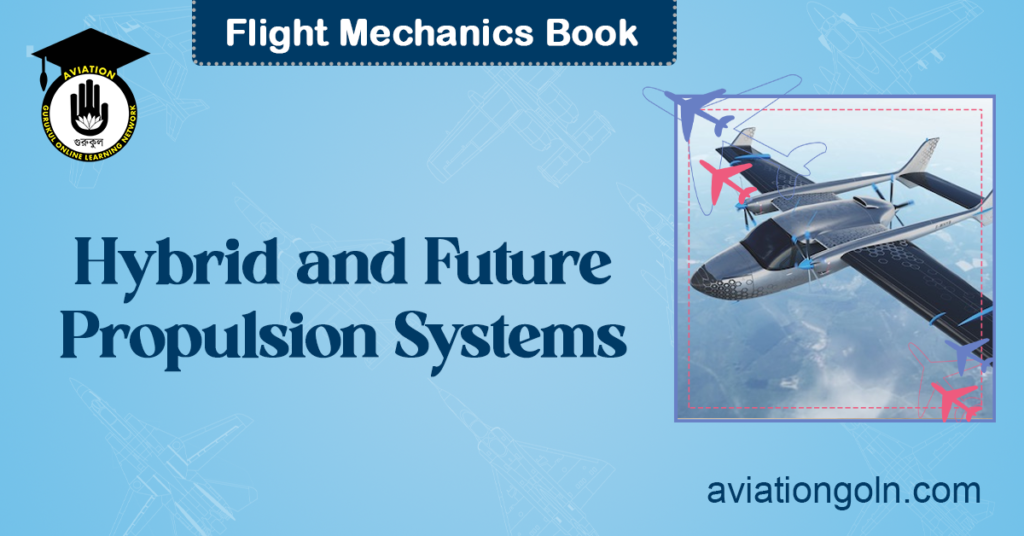Hybrid and Future Propulsion Systems: In the context of rapidly evolving technology and increasing environmental concerns, the world of aviation is undergoing a transformative shift. Traditional fossil fuel-based propulsion systems are giving way to innovative, efficient, and sustainable propulsion technologies. This article delves into the intricacies of hybrid and future propulsion systems, providing an overview of where aircraft propulsion is headed in the upcoming decades.
Hybrid and Future Propulsion Systems: Aircraft Propulsion
1. Traditional Aircraft Propulsion Systems
To understand the significance of hybrid and future propulsion systems, it’s essential to quickly review traditional propulsion methods:
- Jet Engines: These engines operate on the principle of jet propulsion, where air is drawn into the engine, compressed, mixed with fuel, ignited, and then expelled at high velocities to produce thrust.
- Turboprops: A type of gas turbine engine where most of the energy is used to drive a propeller, making it efficient at lower speeds.
While these systems have been remarkably successful, concerns over environmental sustainability, fuel efficiency, and resource depletion have prompted the search for alternatives.
2. Hybrid Propulsion Systems
Definition: Hybrid propulsion combines two or more sources of power. In most aviation contexts, this involves the integration of traditional fossil fuel engines with electric motors.
- Benefits: Reduced fuel consumption, decreased emissions, quieter operations, and increased efficiency during specific flight phases (e.g., takeoff and landing).
- Challenges: Battery weight, energy density, thermal management, and system integration.
Examples:
- E-Fan X: Developed by Airbus, Rolls-Royce, and Siemens, this hybrid-electric technology demonstrator aims to pave the way for commercial aircraft with reduced emissions.
- Zunum Aero: Backed by Boeing, this startup’s hybrid-electric aircraft concept focuses on regional air travel.
3. Fully Electric Propulsion
As technology progresses, the aviation industry is exploring the feasibility of entirely electric aircraft.
Advantages: Zero in-flight emissions, reduced operational costs, less noise pollution, and a decrease in maintenance requirements due to fewer moving parts.
Challenges: Current battery technology, limited energy density, range constraints, and longer recharging times compared to refueling.
Examples:
- Alice by Eviation Aircraft: An all-electric aircraft designed for regional flights with a range of approximately 650 miles.
- Pipistrel Alpha Electro: A two-seater electric trainer aircraft already in operation in several countries.
4. Hydrogen Fuel Cells
Hydrogen fuel cells generate electricity through a chemical reaction between hydrogen and oxygen, with the only byproduct being water.
Advantages: Zero carbon emissions, higher energy density than batteries, and the potential for rapid refueling.
Challenges: Hydrogen storage, production, infrastructure, and the current high costs associated with hydrogen fuel cells.
Examples:
- Airbus ZEROe: Airbus has unveiled concepts for hydrogen-powered aircraft, aiming to put them into service by 2035.
5. Biofuels and Synthetic Fuels
These are alternatives to traditional jet fuel, derived from renewable resources or synthesized from various chemicals.
Advantages: Reduction in carbon footprint, potential use in existing engines with minimal modifications, and diversification of fuel sources.
Challenges: Scalability, competition with food crops (for certain biofuels), and energy-intensive production processes.
6. Advanced Nuclear Propulsion
Though still in the conceptual phase for commercial aviation, nuclear propulsion offers tremendous energy density and the potential for long-duration flights.
Advantages: Vast energy output and the potential for zero carbon emissions.
Challenges: Safety concerns, public perception, high developmental costs, and the challenges of integrating a reactor with an aircraft.
7. Distributed Propulsion
Distributed propulsion involves having multiple smaller engines or propulsion units spread across the aircraft instead of a few larger ones. Examples include many electric fans or propellers embedded along the wing.
Advantages: Potential for improved efficiency, redundancy, and innovative aircraft designs.
Challenges: Complex power management, aerodynamic interactions, and system integration.
8. Anticipating the Future
The future of aircraft propulsion is not limited to one solution but rather a combination of various technologies tailored to specific use cases:
- Urban Air Mobility (UAM): For short intra-city commutes, electric and hybrid-electric systems seem promising due to their quiet operations and zero local emissions.
- Regional Flights: Hybrid systems, fully electric planes, and hydrogen fuel cells could dominate this space.
- Long-Haul Flights: Biofuels, synthetic fuels, and perhaps advanced nuclear propulsion might play a role, considering the high-energy requirements.
The aircraft propulsion landscape is on the brink of a revolutionary shift. Hybrid and future propulsion technologies are not just about sustainability; they hold the promise of reshaping the entire aviation ecosystem, from aircraft design to the way we perceive air travel.
While challenges remain, the combined efforts of researchers, industry leaders, and policymakers worldwide ensure that the next chapter in aviation will be both exciting and sustainable. As the boundaries of technology expand, so too will our horizons, bringing about an era of efficient, eco-friendly, and innovative air travel.
See more:

